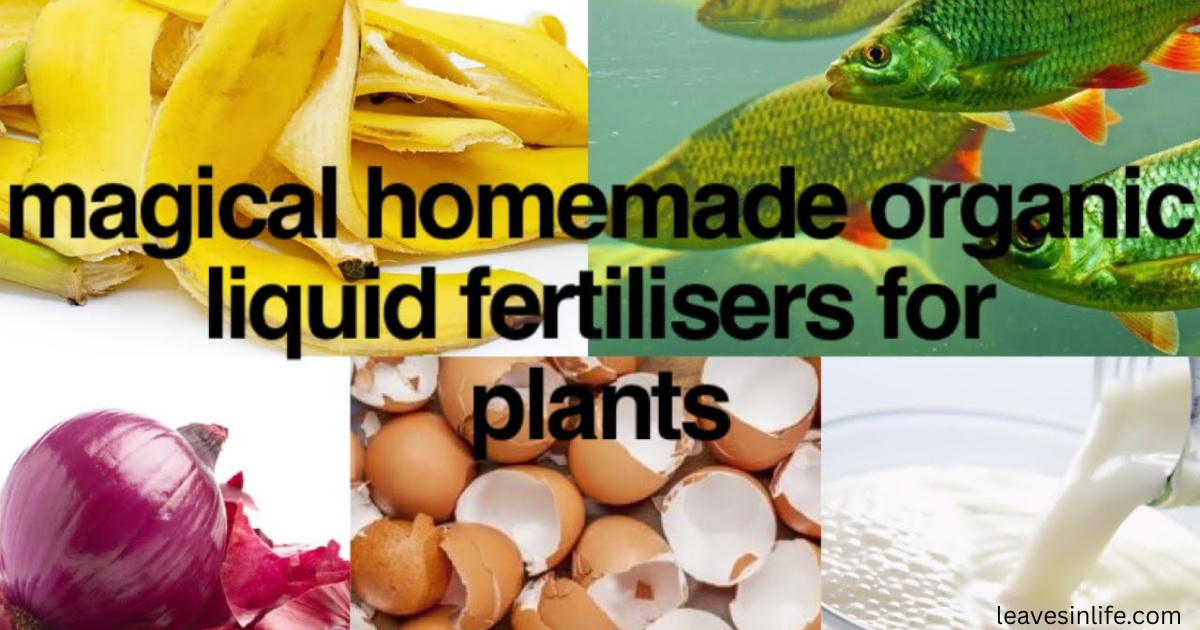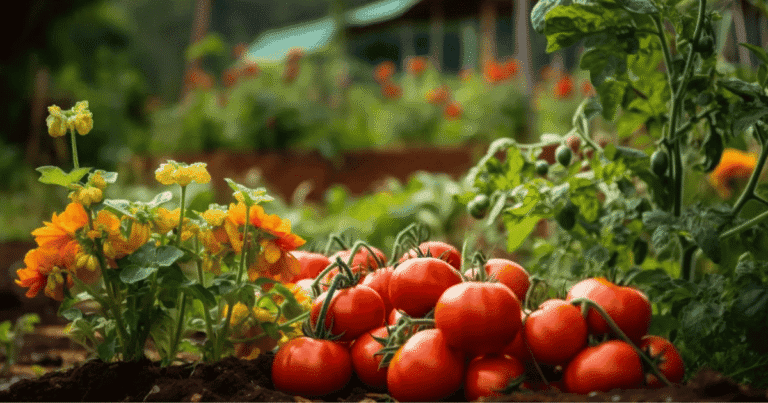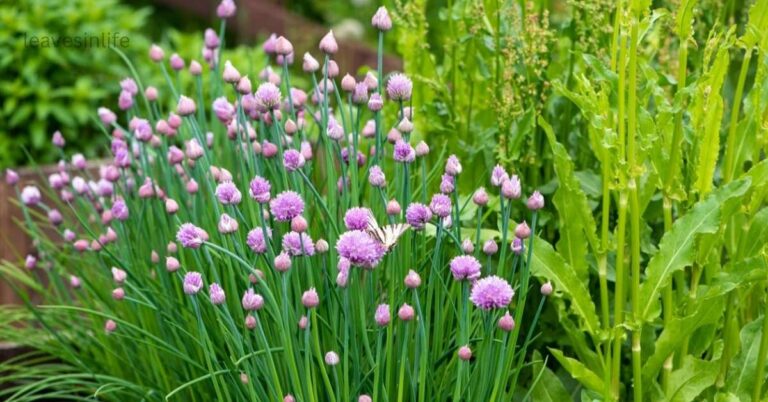Planting comes up with many minor and major challenges for a gardener as plants grow and want care, attention, maintenance and nutrition. Despite Care and maintenance, Main thing is nutrition that we can provide by natural fertilizer without spending money, especially for kitchen gardening. Here I am going to share some Effective and wallet friendly homemade fertilizer for tomato plants that you can simply make by common ingredients in your home with prominent results in plants growth and yield. An organic or Natural fertilizer is always recommended because it:
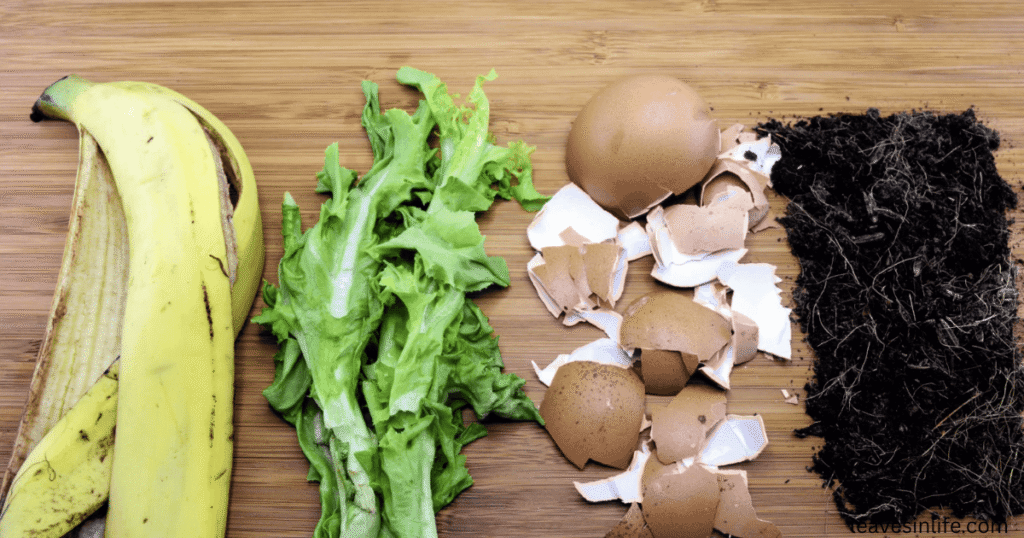
- Provide slow and steady nutrient release
- Improve soil health and fertility
- Cause no harm to plants or the environment
- Promote sustainable, eco-friendly gardening
By using organic fertilizers for your tomato plants, you can ensure long-term soil health, consistent growth, and a safe, natural harvest.
Basic nutritional requirements of tomato plants
Tomato plants need a balanced diet of nutrients to grow healthy, produce strong stems, and bear plenty of delicious fruit. Understanding the nutritional requirements of tomato plants helps you provide the right nutrients by natural fertilizer for maximum growth and yield.
Macronutrients ( The Main Tomato Plant Nutrients )
Macronutrients are the key elements that tomato plants need in large amounts, or you can say that they are the foundation of every tomato fertilizer guide. By understanding these requirements, you can even make natural fertilizer choosing the right ingredients to feed your tomato plants according to these nutrients level.
- Nitrogen (N): Encourages leafy growth and gives the plant a deep green color. It’s one of the most important tomato plant nutrients for early development.
- Phosphorus (P): Supports root growth, flowering, and fruit formation. It’s essential when learning how to feed tomato plants correctly.
- Potassium (K): Improves plant strength, disease resistance, and fruit ripening. It helps produce firm, flavorful tomatoes.
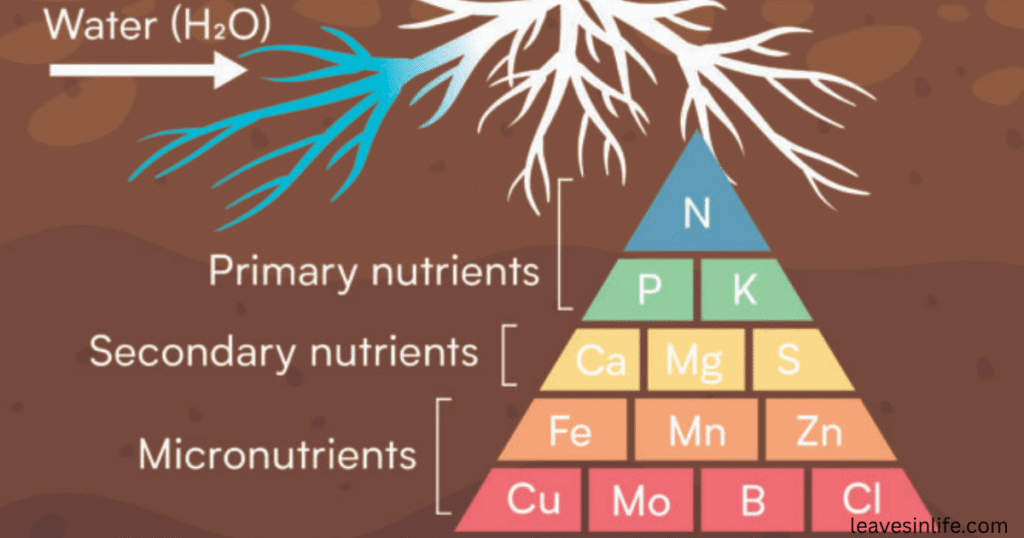
Micronutrients ( The Supporting Nutrients for Tomato Plants )
Micronutrients are required in smaller amounts but are just as vital for healthy tomato growth. These nutrients are oftenly present in kitchen leftovers and eventualy in homemade fertilizers for tomato plants.
- Calcium (Ca): Prevents blossom end rot and helps in strong fruit development.
- Magnesium (Mg): Key element for photosynthesis and maintaining green leaves.
- Sulfur (S): Important for protein formation and plant immunity.
- Boron (B): Helps in flower and fruit development.
- Iron (Fe): Essential for chlorophyll production and prevents yellow leaves.
- Manganese (Mn), Zinc (Zn), and Copper (Cu): Support enzyme activity and overall plant health.
Homemade fertilizer recepies for tomato plants
homemade fertilizers are natural fertilizers which are cost-effective and safe for both your plants and the environment. They are long-lasting because they are natural fertilizers so they release nutrients slowly, giving tomatoes a steady food supply instead of quick bursts that fade fast. Homemade fertilizers also reduce the risk of side effects like root burn or chemical buildup, which often occur with synthetic ones. Plus, you can make them easily using kitchen and garden waste saving money while recycling organic materials. Here are some highly effective homemade fertilizers that you can use according to soil need of your garden or pots.
Banana peels – phosphorus rich natural fertilizer
These simple kitchen scraps are packed with potassium, phosphorus, and nitrogen — three key nutrients that help tomato plants grow strong, healthy, and full of fruit.
Banana peels are especially useful during the early growing season and flowering stage. When transplanting seedlings, just bury a few peels in the soil near the plant roots. As they slowly break down, they release nutrients that feed your plants naturally. You can also scatter small pieces of banana peel around the base of your tomato plants to boost flower and fruit growth.
Banana peel fertilizer recepie:
You’ll need:
- 3–4 banana peels
- 1 bucket of water
- Cut the banana peels into small pieces.
- Put them in a bucket and fill it with water.
- Cover the bucket and let it sit for 5–7 days.
- Strain the liquid and pour it into a watering can.
- Use this banana peel tea to water the soil around your tomato plants.
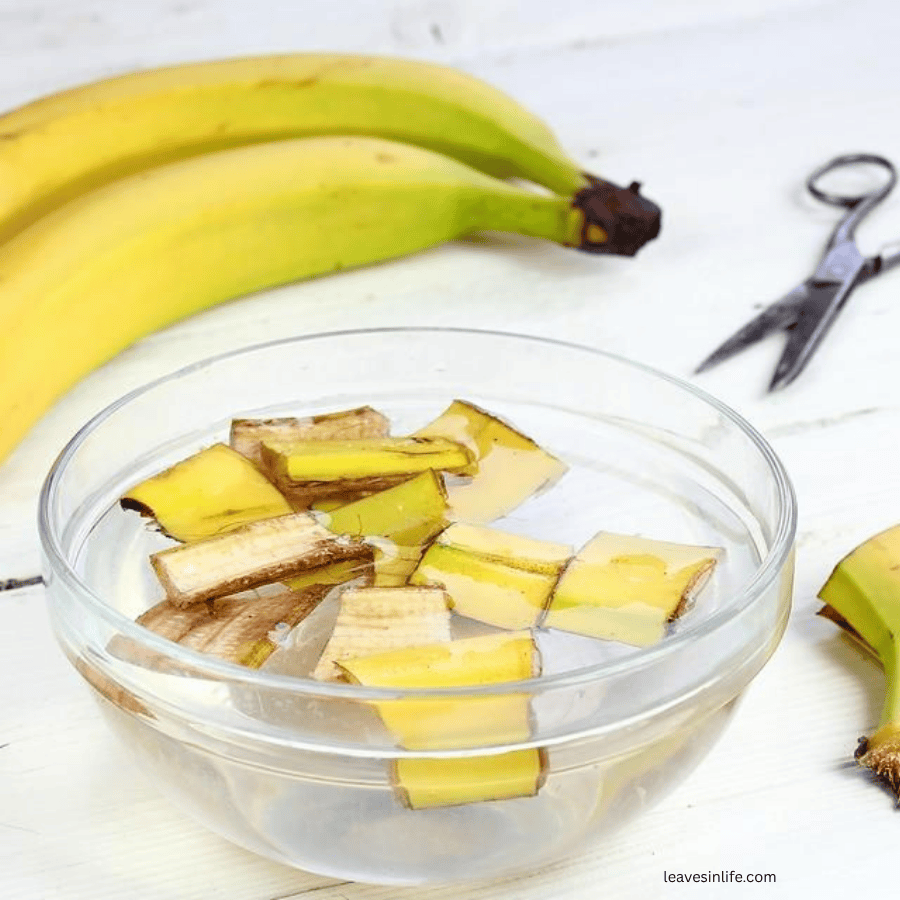
How to apply: Bury small peel pieces near roots during planting for slow nutrient release.
Water plants every two weeks with diluted banana peel tea for a quick boost.
You can also scatter dried peels around the base as mulch to keep soil moist and fertile.
Best time to Apply: Use during transplanting and every 2 weeks through flowering and fruiting for best results.
Benefits for tomato plants:Banana peel natural fertilizer provides potassium, phosphorus, and nitrogen that boost growth. It’s eco-friendly, chemical-free, and naturally improves soil fertility for healthier, tastier tomatoes.
This simple homemade fertilizer is natural, long-lasting, and chemical-free, giving your tomatoes the nutrients they need to produce juicy, delicious fruits!
Eggshells – Best natural fertilizer for tomato plants
If you want to boost your tomato plants with extra minerals without using store-bought fertilizers, save your eggshells instead of tossing them away. Eggshells are full of calcium and magnesium, two important minerals that help tomato plants grow strong, healthy, and disease-resistant.
Calcium plays a major role in preventing blossom end rot, while magnesium supports overall growth and fruit quality. Using eggshells in your garden is one of the easiest and most natural ways to keep your tomatoes thriving all season long.
How to Make Eggshell tomato plants Fertilizer (Simple Recipe)
You’ll need:
- 6–8 clean, dried eggshells
- 1 pot of water
- Crush the eggshells into small pieces or grind them into powder.
- Place them in a pot, cover with water, and boil for 10 minutes.
- Let the mixture steep overnight to release minerals.
- Strain and dilute the liquid with extra water.
- Use this eggshell tea to water your tomato plants once a week.
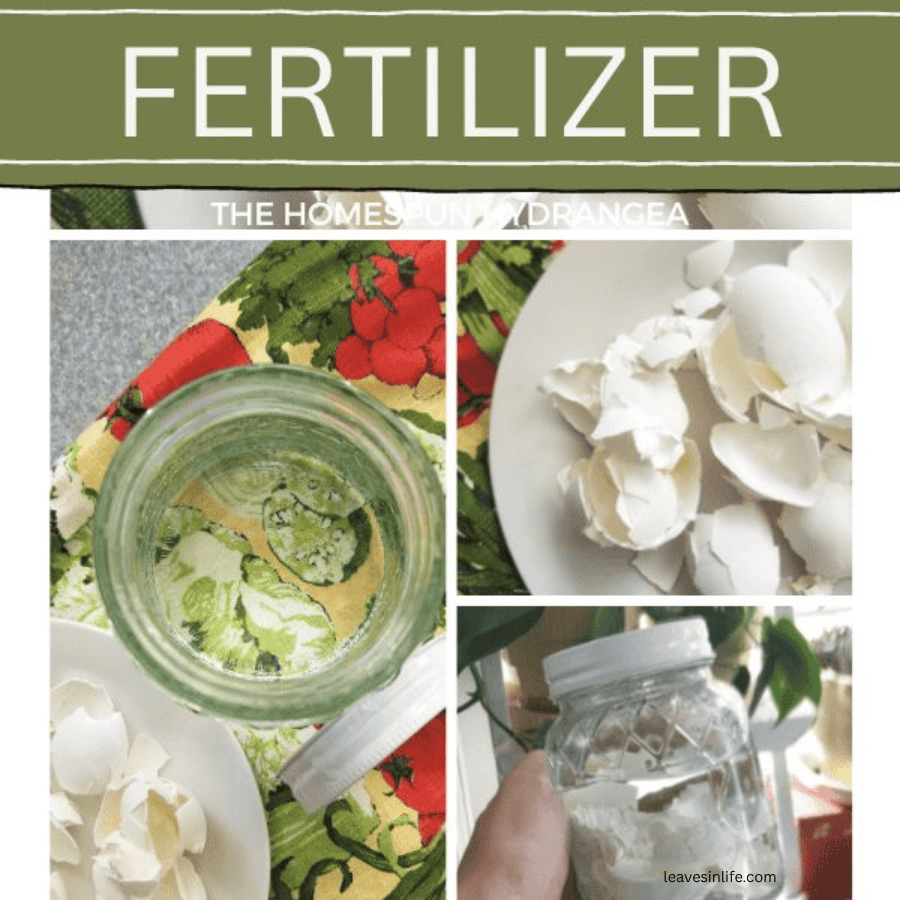
How to apply: Sprinkle crushed or powdered eggshells around the base of your tomato Or, use the prepared eggshell tea to water plants once a week for quicker absorption.
Best time to Apply: Apply once a week during the growing and fruiting stages to boost calcium and prevent blossom end rot.
Benefits for tomato plants: Eggshell fertilizer supplies calcium and magnesium that strengthen stems, prevent blossom end rot, and improve fruit quality. It’s a natural fertilizer to keep tomato plants healthy and productive.
If i dont have that much time, i just sprinkle crushed or powdered eggshells directly around the base of your tomato plants so you can also do that. As they break down, they slowly release calcium into the soil — a long-lasting and completely natural fertilizer.
Eggshell fertilizer is a chemical-free, eco-friendly way to keep your tomato plants strong and productive. Regular use encourages better flowering, stronger stems, and healthier fruits, helping you enjoy a rich, vibrant tomato harvest straight from your garden.
Tea Leaf Fertilizer for Tomato Plants – pure natural fertilizer
Did you know your used tea leaves can do wonders for tomato plants? Instead of throwing them away, reuse them as a natural fertilizer packed with nitrogen, potassium, and magnesium. These nutrients help tomatoes grow strong stems, lush leaves, and vibrant, healthy fruits.
Tea leaves also contain antioxidants and tannins that naturally protect tomato plants from pests and fungal diseases, making them a gentle yet effective garden booster.
How to Use Tea Leaves for Tomatoes
1. As mulch:
Open used tea bags, dry the leaves, and sprinkle them around the base of your plants. They’ll slowly break down, releasing nutrients into the soil throughout the season.
2. In compost:
Add dried tea leaves or used tea bags to your compost pile. They help warm up the compost and enrich it with organic matter, making your soil healthier.
You’ll need:
How to Make tea leaves homemade Fertilizer for tomatoes (Simple Recipe)
- 1 cup of dried or used tea leaves
- 1 bucket of water
- Soak the tea leaves in the water for 2–3 days.
- Strain the liquid and dilute it with fresh water (1:1 ratio).
- Use this tea leaf fertilizer water to nourish your tomato plants every 1–2 weeks.
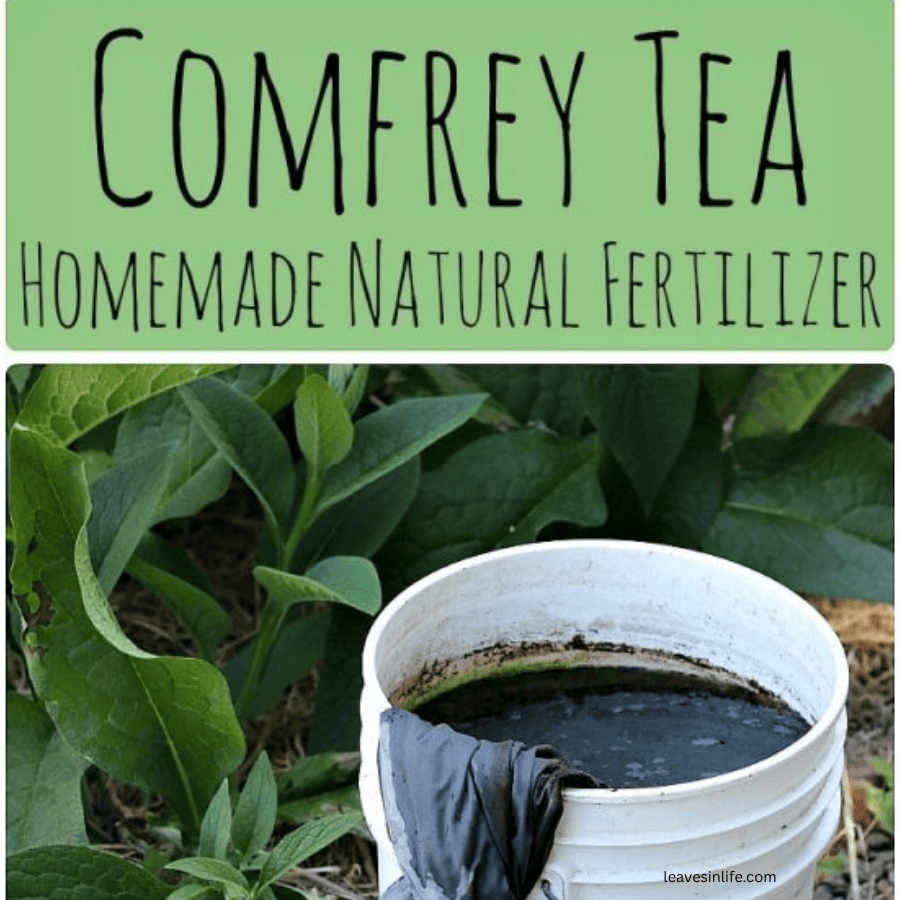
How to apply: Pour it around the base of tomato plants during growth and fruiting.
Avoid splashing on leaves to prevent fungal issues
Best time to Apply: Use every 2–3 weeks during the flowering and fruiting stages to promote strong growth and abundant harvests.
Benefits for tomato plants: Comfrey tea fertilizer is rich in potassium, nitrogen, and trace minerals that boost flowering, fruiting, and overall plant vigor. It’s an organic, fast-acting tonic that promotes strong, healthy tomato growth naturally.
This simple, eco-friendly natural fertilizer adds steady nutrition and improves soil health, helping you grow bigger, juicier, and brighter red tomatoes — all from something you’d normally toss away!
Fish Emulsion Fertilizer for Tomato Plants
If you’re looking for a powerful, natural fertilizer fior your tomato plants, fish emulsion is one of the best organic options. Made from leftover fish parts, this amber-colored liquid is packed with nitrogen, phosphorus, and potassium — the three key nutrients that help tomatoes grow healthy, strong, and full of fruit.
Fish emulsion gives your plants a quick boost during flowering and fruiting acting as natural fertilizer, and it also improves soil health by increasing beneficial microbes. It’s an eco-friendly way to recycle fish waste into a nutrient-rich natural fertilizer that works like nature’s own “miracle grow.”
How to Make Fish Emulsion at Home (Easy Recipe)
You’ll need:
- Fish scraps (bones, heads, or leftovers)
- A large bucket or barrel
- Water
- Fill the bucket with water and add the fish scraps.
- Cover it loosely and let the mixture ferment for 4–6 weeks.
- Stir the mixture every few days to help it decompose evenly.
- Once ready, strain the liquid and store it in bottles or jars.
- Before using, dilute 1–2 tablespoons of fish emulsion per gallon of water.

How to apply: Soil feeding and Foliar spray, Dilute 1–2 tablespoons of fish emulsion in 1 gallon of water. Water the soil around tomato plants every 2–4 weeks or spray lightly on leaves early in the morning.
Best time to Apply: Apply every 2–4 weeks during the growing, flowering, and fruiting stages for steady, healthy plant growth.
Benefits for tomato plants: Fish emulsion fertilizer provides nitrogen, phosphorus, and potassium that promote rapid growth, strong roots, and abundant fruiting. It’s an organic, soil-enriching booster that keeps tomato plants healthy.
How to Use Fish Emulsion on Tomatoes
- Soil feeding: Pour the diluted liquid around the base of your tomato plants every 2–4 weeks.
- Foliar spray: Lightly spray the diluted emulsion on leaves early in the morning for faster nutrient absorption.
Fish emulsion not only nourishes tomato plants but also enriches the soil as a natural fertilizer, helping you grow lush, flavorful, and organic tomatoes — all while reducing waste and protecting the environment.
Wood Ash for Tomato Plants– best homemade natural fertilizer
Did you know the ashes from your fireplace can help grow healthier tomato plants? Wood ash is a natural, mineral-rich fertilizer that contains potassium, calcium, and phosphorus — all essential for strong roots, vibrant flowers, and better fruit quality. It also helps improve your soil’s texture and drainage over time.
When used carefully, wood ash can boost tomato plant growth, increase disease resistance, and enhance the flavor and shelf life of your harvest.
How to Use Wood Ash in the Tomato Garden
You’ll need:
- Clean wood ash (from completely burnt, untreated wood)
- A garden rake or hoe
- Before planting tomatoes, sprinkle 1–2 cups of ash per square foot of soil.
- Mix it well into the top layer of soil so the nutrients spread evenly.
- Allow the soil to rest for a few weeks before planting.
- If your plants are already growing, use only a light sprinkle around the base — too much can make the soil too alkaline.
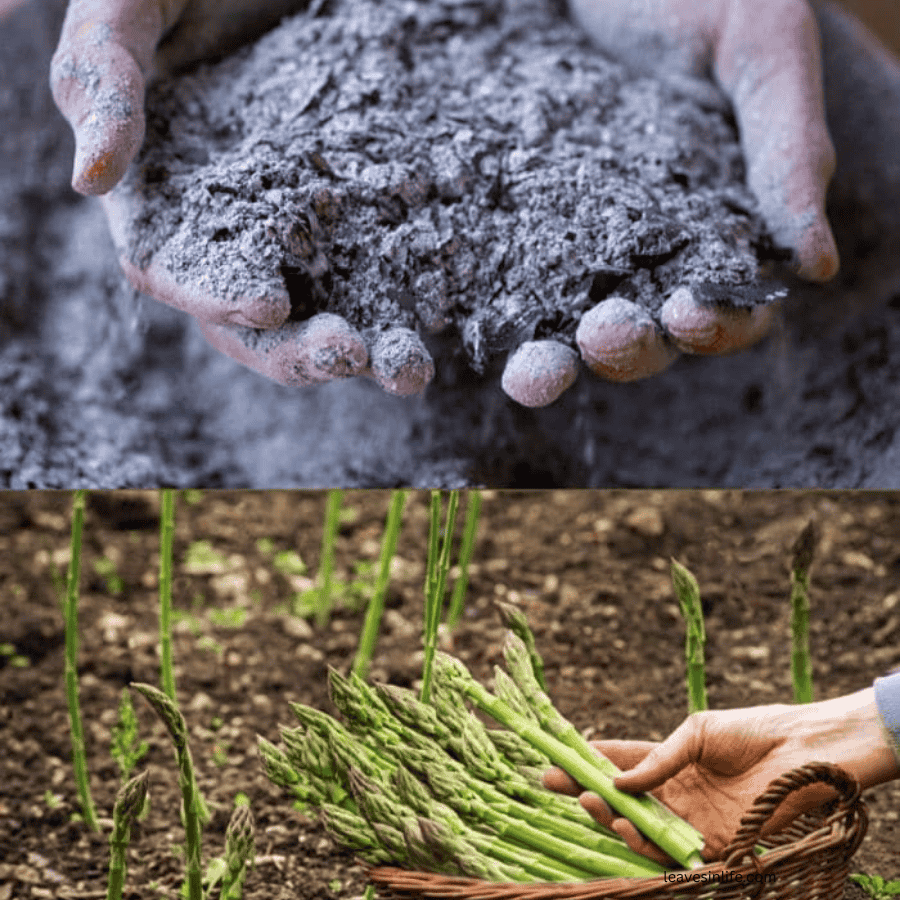
How to apply: Mix 1 cup of wood ash in 1 gallon of water and let it sit for 2–3 days.
Strain the liquid and use it to water tomato plants around the base every 3–4 weeks.
Best time to Apply: Use every 3–4 weeks during the growing and fruiting stages to boost potassium and enhance fruit quality.
Benefits for tomato plants: Wood ash fertilizer is rich in potassium, calcium, and phosphorus, which enhance root strength, fruit quality, and disease resistance. It naturally improves soil structure and supports healthy tomato growth
Extra Tip:
Wood ash is best applied once a year, ideally a few months before transplanting. Over time, it helps loosen compact soil and promotes deep root growth, allowing tomato plants to absorb water and nutrients more efficiently.
So next time you clean out your fireplace, don’t throw those ashes away! Use them to create a free, eco-friendly, slow-release fertilizer that helps your tomato plants produce juicy, flavorful fruits all season long.
Fruit Peel and Vegetable Scrap Fertilizer for Tomato Plants
Don’t toss out your fruit peels and leftover vegetables — they’re a goldmine of nutrients for your tomato plants! These kitchen scraps are full of nitrogen, phosphorus, potassium, and natural sugars, all of which support healthy growth, strong roots, and abundant fruiting. As they decompose, they release nutrients slowly into the soil, feeding your tomatoes throughout the growing season.
Using fruit and vegetable waste not only saves money but also helps reduce food waste — a win for your garden and the environment!
How to Make natural Fertilizer from Fruit Peels and Veggie Scraps
You’ll need:
- A mix of fruit peels (like banana, orange, or apple)
- Leftover vegetable pieces (such as carrot tops, potato peels, lettuce ends)
- A bucket with a lid
- Water
- Chop the fruit and vegetable scraps into small pieces.
- Place them in a bucket and fill it halfway with water.
- Cover the bucket and let it ferment for 5–7 days, stirring every other day.
- After a week, strain the liquid and dilute it with water (1 part fertilizer mix to 3 parts water).
- Use this nutrient-rich liquid to water around the base of your tomato plants.
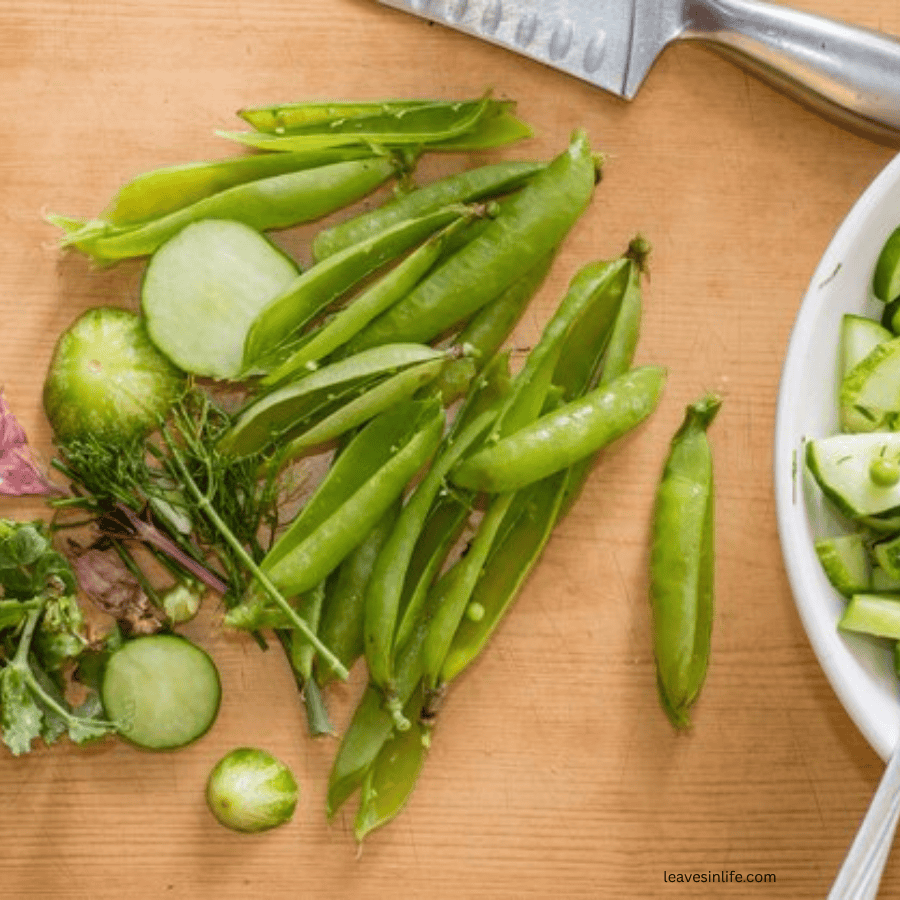
How to apply: Dilute the fermented fruit and vegetable liquid (1 part fertilizer to 3 parts water).
Water tomato plants around the base every 2–3 weeks for steady nutrient release.
Best time to Apply: Apply every 2–3 weeks throughout the growing season for steady nutrient release and healthy tomato growth.
Benefits for tomato plants: provides nitrogen, phosphorus, and potassium that support steady growth, strong roots, and abundant fruiting. It’s an eco-friendly way to recycle waste and nourish tomato plants naturally
Extra Tip:
You can also bury chopped fruit and vegetable scraps directly in the garden soil a few weeks before planting. As they break down, they improve soil texture, boost microbial activity, and create a natural source of long-lasting nutrients.
By recycling kitchen waste into a homemade organic fertilizer, you’ll give your tomato plants a steady supply of nutrition — helping them grow greener, stronger, and more productive, all while keeping your garden 100% natural!
Grass Clippings Fertilizer for Tomato Plants – Natural Nitrogen-Rich Booster
With their high nutrient content and quick decomposition rate, grass clippings are one of the easiest and most effective homemade natural fertilizer for tomato plants. As living plants, grasses naturally absorb nitrogen, phosphorus, and potassium from the soil, storing these key nutrients in their leaves. When recycled back into your garden, they release these nutrients to your tomato plants, improving growth, colour, and fruit production. it is the best tomato plant fertilizer.
How to Make and Apply Grass Clipping Natural Fertilizer
You’ll need:
- Fresh grass clippings (from untreated, chemical-free lawns)
- A garden rake or hoe
- After mowing, collect fresh grass clippings.
- Spread a thin layer (about 1 inch thick) around the base of your tomato plants, keeping a small gap around the stems to prevent rot.
- As the clippings decompose over 1–2 months, they release valuable nutrients into the soil.
- You can also mix clippings directly into planting holes, dilute them in water before use or topsoil a few weeks before transplanting tomatoes for a quick nutrient boost.
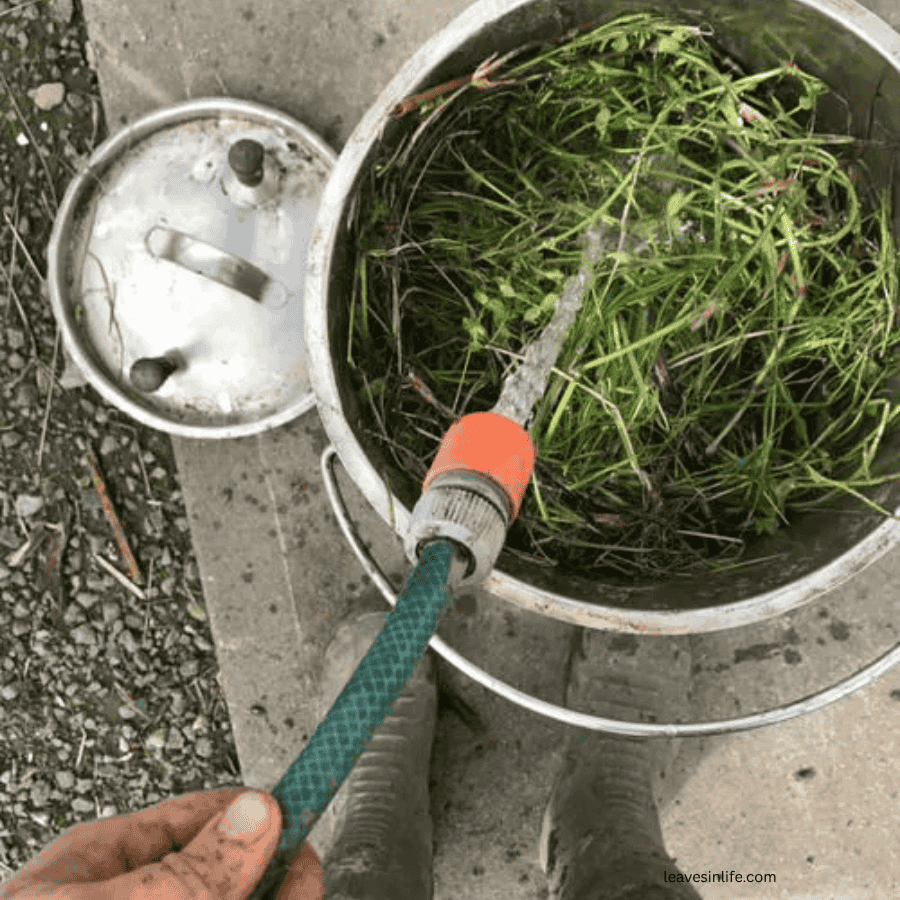
How to apply: dilute the liquid and pour it around the base of tomato plants every 2 weeks.
Avoid wetting the leaves to prevent fungal issues.
Best time to Apply: Use every 2 weeks during the active growing season to boost nitrogen and promote lush, green growth.
Benefits for tomato plants: Grass clipping natural fertilizer is rich in nitrogen, promoting lush leaf growth and healthy stems in tomato plants. It also improves soil moisture retention and slowly releases nutrients as it decomposes.
With all these amazing benefits, grass clippings truly make gardening easier and more sustainable natural fertilizer. Instead of bagging them up or sending them to the landfill, recycle your clippings right back into your garden beds. You’ll not only nourish your tomato plants naturally but also contribute to a greener, more productive garden ecosystem.
Compost Fertilizer for Tomato Plants
Compost is truly the heart of every organic garden. It provides a perfectly balanced meal for the soil, beneficial microbes, and your tomato plants. Made from decomposed kitchen scraps, leaves, and other natural materials, compost is packed with essential nutrients that support strong roots, healthy foliage, and rich fruit production.
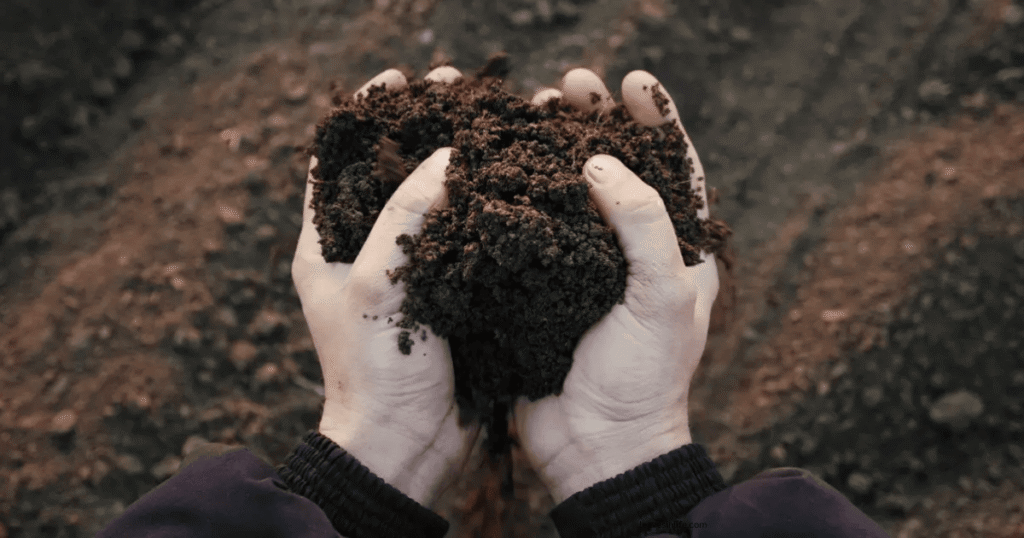
By mixing greens (like vegetable waste) and browns (like dry leaves) with enough moisture, you can create a living, nutrient-dense compost pile right at home. Over time, this mix breaks down into dark, crumbly compost — often called “garden gold” — that’s ready to feed your tomatoes.
How to Use Compost for Tomatoes
You’ll need:
- Finished compost (well-aged, dark, and crumbly)
- Garden soil
Steps:
- Mix compost into your garden beds about 2–3 weeks before transplanting tomatoes at a ratio of 1 part compost to 4 parts soil.
- Once plants are established, top-dress around the base with a thin layer of compost mid-season to keep nutrients flowing.
- Avoid overpacking — compost should stay light and airy to help roots breathe and water drain properly.
Compost not only feeds your tomato plants but also improves soil structure, balances pH, and retains moisture, making it an all-in-one organic fertilizer. It’s a natural way to ensure your plants stay healthy, productive, and resistant to diseases.
Conclusion
Organic tomato gardeners have many effective homemade natural fertilizer options for achieving a rich, healthy harvest.
- Banana peels add potassium for strong flowering and fruiting.
- Eggshells supply calcium to prevent blossom end rot.
- Tea leaves enrich the soil and protect plants naturally.
- Fish emulsion boosts growth and energizes soil microbes.
- Wood ash provides minerals for flavor and disease resistance.
- Fruit and vegetable scraps recycle kitchen waste into natural plant food.
- Compost strengthens soil structure and delivers balanced, long-lasting nutrition.
By combining these organic materials thoughtfully, you can build a self-sustaining, fertile garden ecosystem. Growing tomatoes this way may take patience and care, but the results — lush plants, juicy fruits, and healthier soil — are absolutely worth it.

